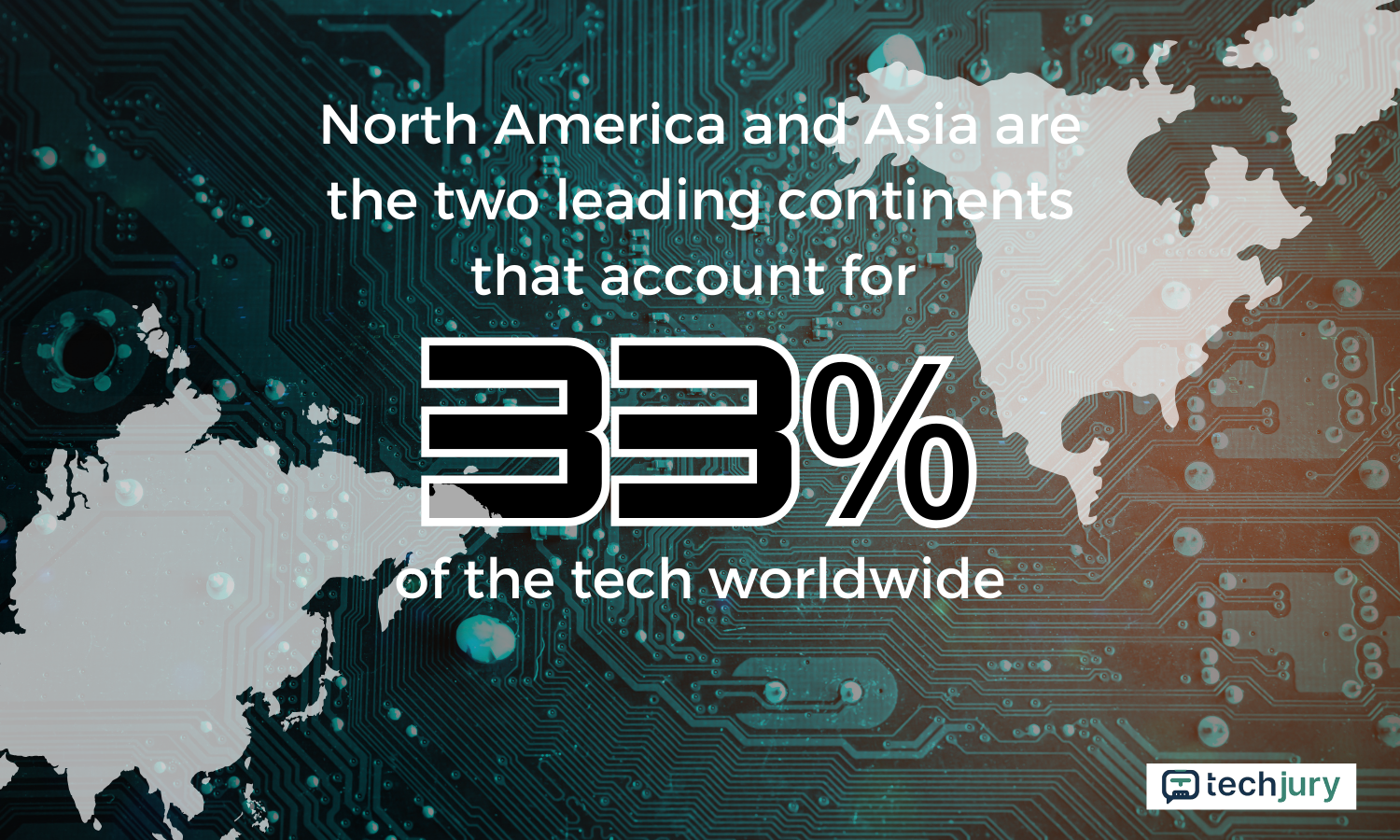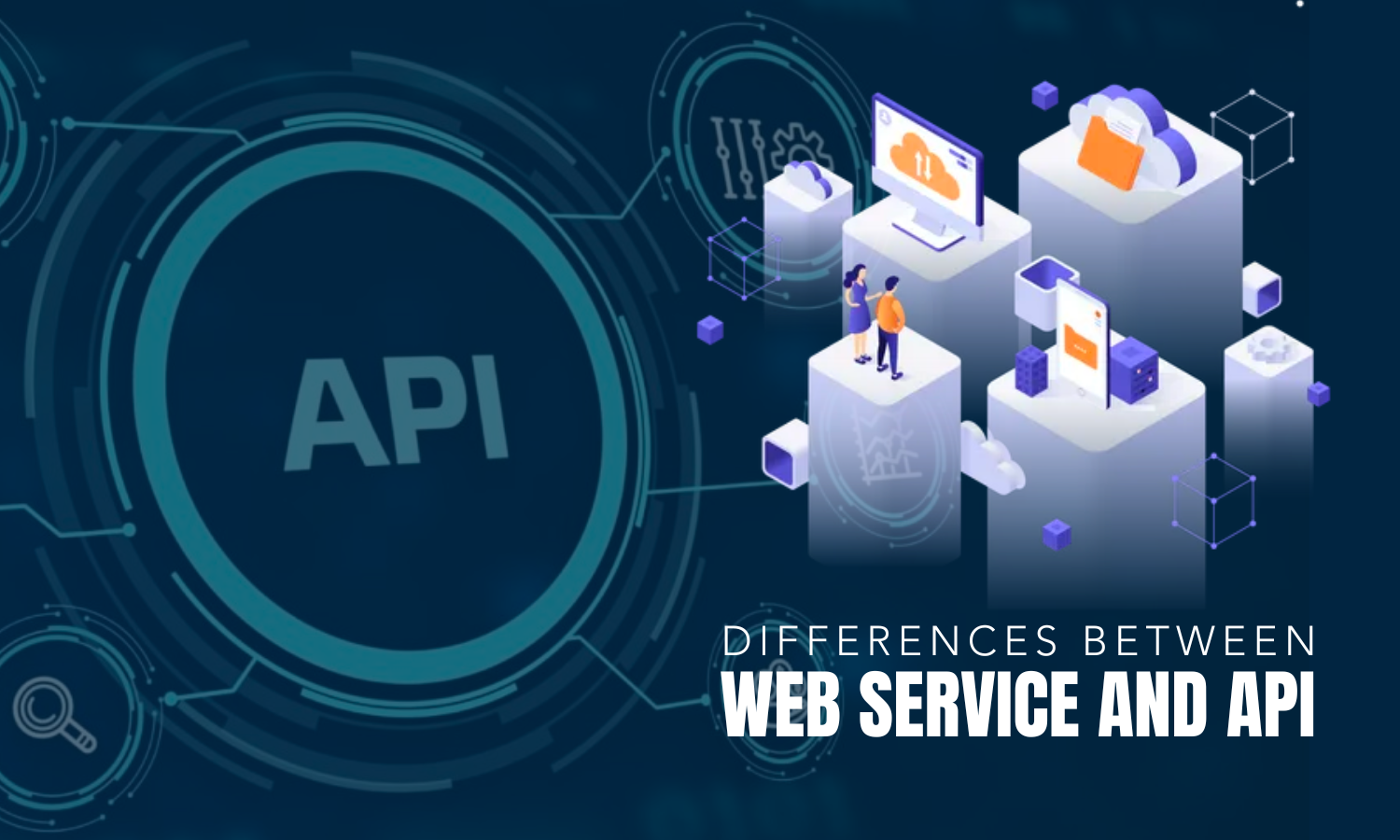

Updated · Feb 11, 2024
Updated · Jan 03, 2024
Harsha Kiran is the founder and innovator of Techjury.net. He started it as a personal passion proje... | See full bio
If I was asked to describe myself using just a few words, I’d go with digital marketing expert, ex... | See full bio
Emerging information technologies such as AI, metaverse, machine learning, Internet of Things, data analytics, and cloud services continue to define the future operations of companies, businesses, and social spaces.
The current compound annual growth rate of the global digital transformation market size is 26.7% from 2023 to 2030. Digital innovation, transformation, and adoption in various business environments contribute to the positive direction of information technology.
Learn more about cutting-edge information technology trends in 2023 as the global digital market expands.
Information Technology Trends
|
(The Business Research Company)
The global information technology market has increased from $8179.48 billion in 2022 to $8852.41 billion in 2023.
However, in the short term, the Russia-Ukraine war has disrupted global economic recovery from the COVID-19 pandemic.
The war has resulted in economic sanctions on multiple countries, a surge in commodity prices, and disruptions in supply chains, leading to inflation across various goods and services and affecting numerous markets worldwide.
Nonetheless, the information technology market will grow at a CAGR of 7.9% and will reach $11995.97 billion in 2027.
(Zippia)
Telecom services, devices, infrastructure, and IT and business services receive significant portions of IT budgets globally. In 2023, the value of the telecom market is $3,041.8 billion.
Tech companies benefit from the ongoing digital transformation, while other companies focus on internal operations to address the challenges faced in 2020.
|
10 Most Technologically Advanced Countries | Top Technology Countries, 2022
|
North America controls 35% of the market share of the tech industry, Asia 31%, and Europe 22%. Although Africa and Latin America have made substantial progress in recent years, developed markets have continued to expand.
(Ericsson)

According to researchers, the monthly mobile data will surpass 21GB by 2024, almost quadrupling the 2018 consumption. 52% of the global internet traffic comes from mobile smartphones, pushing for mobile innovations such as using 5G networks.
Ericsson estimates that 5G networks will carry a quarter of the world's mobile data traffic. North America and North East Asia will lead the 5G deployment, followed by Western Europe.
(Gartner)
In 2023, the software and IT services sectors will experience growth rates of 9.3% and 5.5%, respectively. On the other hand, the devices segment will decrease by 5.1% due to consumers and businesses delaying the replacement of their devices.
Worldwide IT Spending Forecast (Millions of U.S. Dollars)
|
|
2021 Spending |
2021 Growth (%) |
2022 Spending |
2022 Growth (%) |
2023 Spending |
2023 Growth (%) |
|
Data Center Systems |
189,506 |
6.1 |
209,190 |
10.4 |
216,262 |
3.4 |
|
Software |
732,030 |
14.8 |
790,385 |
8.0 |
879,625 |
11.3 |
|
Devices |
807,580 |
15.8 |
739,982 |
-8.4 |
735,394 |
-0.6 |
|
IT Services |
1,207,966 |
12.8 |
1,258,150 |
4.2 |
1,357,914 |
7.9 |
|
Communications Services |
1,459,483 |
3.8 |
1,435,401 |
-1.7 |
1,469,220 |
2.4 |
|
Overall IT |
4,396,565 |
10.2 |
4,433,108 |
0.8 |
4,658,416 |
5.1 |
(Source: Statista)
Compared to 2021, the US was still in the lead with 34.7%. The EU ranked second with 15%, while China followed with 11.3%.
Industry experts have forecasted that these numbers will continue to increase in 2022. By Q4, the ICT (Information and Communication Technology) market will reach $5.5 trillion; by 2023, it will grow to almost $6 trillion.
As of 2022, the US accounts for 36% of the market share, while China and the EU hold 11.6% and 11.3%, respectively.
(IDC)
Although familiar countries like Germany and the UK are still high on the list of the fastest-growing markets, we must note the progress of smaller-scale economies like Argentina and Chile due to the overall boom of new technologies in the Latin American tech market.
Tech adoption is widespread - China actively invests in robotics, Germany is doing wonders with 3D printing innovations, and India is spending heaps on mobility services.
(Statista)
While the tech industry grows by the year, users across the globe enjoy different access to innovations. African countries still need to catch up, enjoying a mere 5% global distribution of tech industry trends.
Progress within Africa spreads unevenly as well. A notable example of that divide is Nigeria. The country's demographic boom and continuous drop in smartphone prices will help Nigeria host over 50% of the mobile technology users on the continent by 2025.

(Spiceworks)
More prominent companies undoubtedly hold the power (and money) to get the most from the latest information technology trends across all innovations, such as data analytics, that make their decision-making processes 5X faster.
Another example is blockchain, which is prominent among the financial sector and helps banks reduce 30% of their infrastructure costs. Global blockchain adoption from small and mid-sized companies gravitates around 9%, while enterprises with over 5000 employees are much more receptive with 25%.
(Fortune)
An increasing number of companies are attempting to embrace the recent information technology trends in their early stages, and they often pivot from their traditional offerings.
One of the most trusted cloud platforms by Fortune 500 companies is Microsoft Azure because of its usefulness in:
Due to the flexibility and convenience of cloud platforms, 92% of enterprises adopt a multi-cloud strategy, while 60% implement a hybrid cloud strategy.
(CompTIA, Gartner)
Gartner projected that the total IT spending in 2023 will reach $4.7 trillion, an increase of 4.3% from 2022. Spending for data centers, devices, software, IT services, and communications services will result in digital business transformations, enabling automation and efficiency to drive growth.
44% of businesses plan to spare the same budget as in previous years. The main areas of interest are innovative, cutting-edge technology and collaboration tools.
Technology has now become synonymous with innovation. Companies integrate new technologies into their operations, factoring broader solutions that enable revolutionary processes, increase productivity, and focus on people's well-being.
(Inc Africa)
IT trends for 2022 indicate that the global predictive analytics market has continued to grow at a steady 24.5% rate. By 2026, it will reach $22.1 billion, according to the experts' forecasts.
Moreover, Gartner predicts worldwide spending on cloud computing will increase from $314 billion (2020) to $482 billion (end-2022). It's not a surprise since many industries' computing workloads currently run on the cloud.
AI is here and inevitable. What's your strategy in taking advantage of this new tech?
|
(IDC, CompTIA)
Platform investments will maintain the lead in terms of IT expenditure. A whopping 70% of all spending will take cloud, mobile, social, and big data analytics to the next level.
As the “business of technology” continues to expand, Comptia outlined the primary catalysts of change in the tech ecosystem, which include:
(Yahoo Finance, Statista, Mckinsey)

The total global corporate spending for AI in 2022 reached $91.9 billion, a slight decrease in 2021 that reached 93.5 billion.
Despite the decrease, many companies are resuming operations and embracing AI services, and the industry will continue to experience rapid growth.
Companies use AI for various functions such as:
(IDC)
The latest technology trends in information technology bring exciting changes in how businesses build customer relationships. Chatbots and voice-operated tech will actively feature in the short-term plans of companies, while AI-enabled user interfaces and process automation will rule the game by 2025.
(PR Newswire)
In a survey of small and mid-sized businesses, over three quarters are optimistic compared to 49% in 2022.
Business owners' outlook for national and local economies also increased significantly, where 47% are highly optimistic about the local economy and 34% are highly optimistic about the national economy.
(Statista)
The IT industry will ensure jobs for over 62 million people by the end of 2023 based on the latest technology trends. The growth is significant from the 55.3 million pre-covid estimations for 2020.
Generative AI holds the potential to not only help organizations increase productivity but also empower one of their most valuable and often unsung assets—middle managers.
— Antonio Grasso (@antgrasso) September 2, 2023
Sourse @McKinsey Link https://t.co/H0cbt0NeCx via @antgrasso #AI #GenerativeAI pic.twitter.com/IpmMJohDC0
(CompTIA)
The labor market in the US is getting tighter, and 2022 is no different. Emerging tech will increase the need for AI, IoT, AR/VR, and blockchain experts, so the job market will inevitably undergo some transformations.
Industry giants will look for the best talents to handle their leading technologies, resulting in over 43% of IT companies looking for replacements.
(Information Week, Fintech District)
In 2019, the global spending on digital transformation amounted to $1.18 trillion. After a year, it increased by 11% or $1.31 trillion. As expenditures soar yearly, experts predicted that the total spending on digital transformation will reach $3.4 trillion by 2026.
Companies focus on digitalization to improve performance, create new revenue streams, drive growth, and achieve better customer experience.

(Swzd)
55% of European companies fully intend to adopt AI-based security technologies. Also, 65% of businesses in Europe and 51% in North America plan to adopt zero-trust security solutions.
Several industries have also shown a keen desire to welcome emerging technologies. For example, 3D printing has a 62% adoption rate in the education industry and 45% in manufacturing.
(PwC)
While terrorism remains a top issue for everyone, the research reveals that CEOs face diverse dilemmas. For example, some countries' protectionist policies are a big concern (35%) for tech directors. Global CEOs, on the other hand, put this way back on the list, with only 29% worried about such a state of the economy.
1/ In "Numbers Don't Lie: Exposing the Harsh Truths of Cyberattacks in New Report" by BlackBerry's Global Threat Intelligence team, they summarize the findings of their latest quarterly report on cyberattacks. #cybersecurity #cyberattacks #hacks #AI #infosec
— DB Hackers (@DbHackers) September 1, 2023
(Statista)
Digital evolution comes with many perks, but we must also consider the hidden dangers. Cyber attacks are among the most pressing concerns for tech businesses and their clients. Companies deter any cyber attacks by investing on:
(PECB)
In the past, companies paused their adoption of AI initiatives due to online safety risks. However, new technological trends have proven that advancements in AI, threat intelligence, and machine learning can help recognize data patterns and curb security threats on time, which can help companies reduce incident response times and ensure compliance with security practices.
Experts estimate that the global market of AI in cybersecurity is estimated to grow at a steady 23.6% rate between 2021 and 2027 and will reach $46.3 billion by 2027.

(Profit Confidential, The Guardian)
Even the Big Five in the tech business are not 100% fail-safe. Facebook investors felt that particularly hard in March 2018. As the Cambridge Analytica data breach scandal erupted, their stocks plummeted in hours, which cost shareholders a staggering $120 billion.
Cambridge Analytica, a British political consulting firm, worked on presidential ads for Donald Trump during the 2016 election. The endeavor was initially funded by conservative billionaire Robert Mercer and led by former Trump advisor Steve Bannon.
During the trial, Congress asked Facebook about allegations of the data breach scandal, in which information from 87 million profiles, mainly from the US population, was utilized by Cambridge Analytica for political advertising. However, Facebook resolved all allegations, but the UK government fined the social network app for data breaches.
(Spiceworks)
The future is now, and tech companies are ready to ride the wave of digital evolution in search of competitive advantage. New technology trends continue to shape the future.
Process automation and optimization, emerging tech development, and a skilled workforce will be the cornerstones of any successful trend adoption.
As digital transformation continues to revolutionize operations in workplaces, companies, and businesses, experts predict that the worldwide number of IoT-connected devices will increase to 43 billion by 2023, an almost threefold increase from 2018.
With the current information technology trends like AI, IoT, VR, and blockchain, it will revolutionize whole sectors of the economy like:
The increasing demand for digital transformation among companies and businesses provide a positive outlook of what the future of information technology looks like: thriving and ever-changing.
Your email address will not be published.
Updated · Feb 11, 2024
Updated · Feb 11, 2024
Updated · Feb 08, 2024
Updated · Feb 05, 2024



